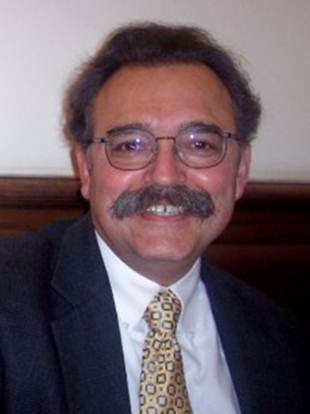Lawrence Bottomley
Contact Information
- bottomley@gatech.edu

Lawrence Bottomley
Professor Emeritus
Awards
Class of 1940 W. Howard Ector Outstanding Teacher Award, 2012
Georgia Tech Outstanding Undergraduate Research Mentor Award, 2007
Education
B.S., California State University, Fullerton; Ph.D., University of Houston.
Research
Bottomley's research interests are in electroanalytical chemistry, scanning probe microscopy, and surface enhanced Raman scattering. Current research is focused on:
Theory and Application of Cyclic Square Wave Voltammetry.
The objective of this research endeavor is to develop Cyclic Square Wave Voltammetry (CSWV) as a mechanistic tool for the identification of electrode reactions. To achieve this objective, we are developing diagnostic criteria specific for a wide range of mechanisms involving reversible, kinetically-controlled, and/or chemically-coupled reactions for diffusible as well as surface-confined redox active species. For each mechanism, a reaction is written for the electron transfer step and the conditions under which it occurs. Appropriate boundary conditions for this system are applied. The resultant partial differential equations are solved for the CSWV waveform. The solutions are a set of equations describing concentrations of the reactants and products as a function of time. These equations are inserted into the Butler-Volmer relationship to describe the current response as a function of potential with a single equation that contains one or more integrals. The current response is converted into a dimensionless current to remove the electrode area and reactant concentration from the equation. Next, the Nicholson-Olmstead method is used to replace the integrals within the dimensionless current equation to summations which can be expressed numerically and the resultant numerical solution is coded in MATLAB. The MATLAB code is then used to predict current-potential data sets resulting from systematic variation of empirical and intrinsic parameters for the specific electrode reaction mechanism understudy. These data sets are then analyzed to determine trends in the peak currents, peak potentials, peak widths, peak current ratios, and peak separations with variation in step time, step height, switching potential, pulse height, heterogeneous rate constant, and the electron transfer coefficient. From these trends, diagnostic criteria specific to the mechanism understudy is generated. The criteria is then tested experimentally by acquiring current-voltage-time-concentration data sets on redox active solutes whose electrode reaction mechanism has been previously determined. As the criteria for a given mechanism is identified, we will broadly disseminate this information so that others can make use of them in the characterization of the electrochemical properties of newly synthesized compounds and materials. We are especially interested in presenting the results of our research in a manner that will be easily understood by non-specialists and in a format that will be readily accessible to researchers worldwide.
Research Keywords
Electrochemistry; Atomic force microscopySelect Publications
https://dx.doi.org/10.1021/cr0681041